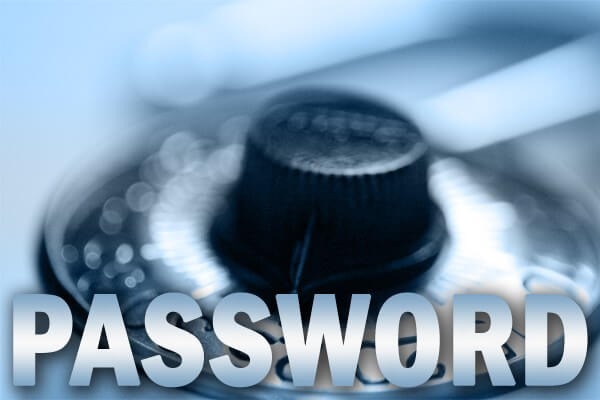The last time I checked, I was up to 197 usernames and passwords for various websites and services. I don’t think I have to tell you that keeping all of those logins safe and organized is one of the most common hassles any computer user can run into. However, iWork (or at least Numbers) users have an option to keep them safe in an easy and secure way. Most of my students and people, in general, have the idea to use the same password for everything. To be honest, this isn’t the safest thing to do. You might not realize when you let a friend log in to your computer by giving them your password that Oops! That’s also the password for my bank account! Or if you think about how frequently someone gets their Facebook account hacked, that it might also be the password for your credit card’s website. Numbers was Apple’s answer to Microsoft Excel. It’s similar in many ways but the overall principle is extremely different.
Apple thought: “Hey, why don’t we actually make spreadsheets easy?” and from that question, Numbers was born. You can learn all about Numbers and how to create amazing spreadsheets in minutes from many different sites including MacBlend.com. Today we’re going to focus on the very specific use of Numbers: Organizing your Passwords Safely & Securely. First, we open Numbers. If you don’t already own it, you can quickly and easily purchase it from the Mac App Store.
Next, we create a simple spreadsheet by clicking “Blank” in the template chooser. There are quite a few fantastic templates both built-in and available from sites like iWorkTemplates.com. For this situation, we don’t need much to get started with a document for Passwords. Let’s start by adding a few labels.
Under the first cell (or A1) we might label that something like “Login” as this will be where we list the actual site or service. Under B1, we can add the title “Username” and finally under C1, we can add the title “Password.” In truth, that’s all we really need. You’re welcome to include any other information you’d like. For example, you could also include a column titled “Last Date Changed” or “Account Creation Date” or somehow include the security questions you added at the time of creation or if you control the logins for your family, you could have a label for whom it belongs to. The sky’s the limit.
After you’ve created your spreadsheet and filled it in with all your important usernames and passwords, you have to tackle the most important part: keeping it safe.
In the upper right-hand corner of the Numbers window, you’ll see a button for the Inspector. For those of you who don’t know, this is a handy little tool with lots of options for changing items in your spreadsheet and even the document itself. Click the first tab of the Inspector which is known as the “Document Inspector.” At the bottom of this small window will be the option to “Require Password to Open.”
Once checked, you’ll be asked to add a password for the document. I know, I know, another password. At least this is the only one you really have to remember.
Once you’ve added a password and saved your document, you’ll notice that even the little preview you’d normally have on your Desktop or within a Finder window is sealed with a small lock icon. You can now rest assured that your passwords are safe. (Tip: If you can avoid it, don’t save the file with a name like “Passwords” just in case your computer ever fell into the wrong hands. Try something like “Shopping List” or “Family Tree”)
Of course, there are many ways to manage your usernames and passwords including 3rd party software and special web plugins. This method just happens to be an easy and safe way for those people wanting a simple solution to a complex problem.
Enjoy!
BONUS: If you’d like to take those passwords with you and you have an iPhone or iPad with the mobile Numbers app on it, you can store the file in your Dropbox account or iCloud to open on your iOS device using the same password. Just be aware that it only asks for your password once so if you log into your document and someone somehow managed to get their hands on your device, all they’d need to do would be open Numbers to find all of your usernames and passwords.
This is a guest post from one of the web’s premier Mac users. Matt Longmire is out of the Seattle area and offers Mac software training remotely and in person.


